Introduction
Choosing perfect ladder for industrial use your business might seem straightforward, but numerous factors must be considered to ensure the best choice. Safety, functionality, and durability are all crucial aspects. In this comprehensive guide, we’ll help you navigate the available options to find the ideal ladder for your needs.
Imagine being in the middle of an important project and realizing that the ladder you have is not high enough or, worse yet, is not safe. Not only is it frustrating, but it can also be dangerous. Choosing one can make a big difference in the safety and efficiency of your daily work. We’re going to explore all the essential aspects to help you make an informed decision.
Types of ladder for industrial use
Choosing the right industrial ladder for your business can significantly impact safety and efficiency. There are various types of industrial ladders, each designed for specific needs and applications. Below, we delve into the main types of industrial ladders and their key features.
Fixed Ladders
Fixed ladders are perfect for locations requiring constant access to elevated areas. These ladders are permanently installed, providing exceptional stability and safety.
Advantages: They offer a solid, secure base, reducing the risk of falls.
Applications: Warehouses, production plants, and maintenance areas needing regular access to elevated spaces.
Common Materials: Galvanized steel, aluminum.
Durability: High resistance to corrosion and wear, ensuring longevity.
Common Uses:
- Accessing rooftops
- Industrial machinery maintenance
- Storage tank access
Rolling Ladders
Rolling ladders are ideal for dynamic work environments. Equipped with wheels, these ladders can be easily moved from one location to another, offering excellent flexibility.
Rolling ladders are mobile and self-supporting, equipped with wheels for easy movement. They are designed to provide stable and secure access to high shelves and storage areas, making them ideal for environments where frequent repositioning is required.
Rolling ladders are perfect for tasks that require mobility and stability. These self-supporting ladders feature wheels, allowing for effortless movement and positioning, ideal for accessing high shelves and storage areas.
Advantages: They offer mobility, stability, and ease of repositioning, enhancing efficiency and safety in various tasks.
Applications: Warehouses, libraries, retail stores, and environments requiring frequent access to high areas.
Common Materials: Aluminum, steel.
Durability: Designed to endure frequent use, offering high resistance to wear, corrosion, and heavy loads.
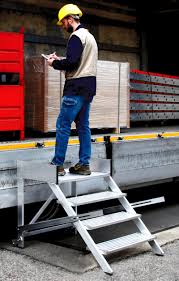
Common Uses:
- Warehousing
- Library book retrieval
- Retail stocking
- Accessing high storage areas
- Maintenance tasks in commercial settings
- Organizing inventory in storage facilities
Step Ladders
Step ladders are a practical solution for temporary tasks and short-term projects. Their compact and foldable design makes them easy to store and transport.Step ladders are self-supporting ladders that come with a fixed height and steps on one or both sides. They are ideal for tasks that do not require a high reach and can be used in the middle of a room or area without needing support from a wall or structure.
Advantages: Portability and ease of use, ideal for quick, short-term tasks.
Applications: Light maintenance, work in confined spaces, and short-term projects.
Functionality: Foldable and easy to transport.
Space Efficiency: They take up less storage space when not in use, making them perfect for jobs requiring quick setup and takedown.
Common Uses:
- Painting
- Light fixture installation
- General maintenance tasks
2. Extension Ladders
Extension ladders are non-self-supporting ladders that can be extended to various lengths. They require a stable structure to lean against and are ideal for tasks that require a high reach.
Advantages: They provide adjustable height, allowing access to different elevations with one ladder.
Applications: Exterior building maintenance, window cleaning, and roofing work.
Common Materials: Aluminum, fiberglass.
Durability: Lightweight and resistant to corrosion, ensuring a long lifespan and easy maneuverability.
Common Uses:
- Exterior building maintenance
- Window cleaning
- Roofing work
- Painting high walls and ceilings
- Tree trimming and landscaping tasks
3. Platform Ladders
Platform ladders feature a stable platform at the top, allowing the user to stand comfortably for extended periods. These ladders provide a larger standing area and often include a guard rail for added safety.
Platform ladders are designed for tasks that require standing at height for extended periods. These ladders feature a stable platform at the top, offering both comfort and safety for the user.
Advantages: They provide a large standing area with a guard rail, reducing fatigue and increasing stability.
Applications: Warehouses, electrical work, and installation tasks that require prolonged standing.
Common Materials: Aluminum, fiberglass.
Durability: Strong and resistant to wear, ensuring a long service life.
Common Uses:
- Electrical work
- Inventory management in warehouses
- Installation of overhead fixtures
- Painting and finishing work
- Accessing elevated shelves and storage areas
4. Trestle Ladders
Trestle ladders are portable and self-supporting, with steps on both sides. They are designed to support two people working simultaneously, making them ideal for collaborative tasks.
Trestle ladders are ideal for tasks that require support from both sides. These portable, self-supporting ladders feature steps on both sides, making them perfect for collaborative work.
Advantages: They allow two people to work simultaneously, enhancing efficiency and collaboration.
Applications: Painting, construction work, and maintenance tasks that require two-person teams.
Common Materials: Aluminum, fiberglass.
Durability: Designed to withstand heavy use, offering high resistance to wear and corrosion.
Common Uses:
- Painting
- Construction work
- Maintenance tasks
- Electrical installations
- General repairs and installations
5. Multi-Purpose Ladders
Multi-purpose ladders are highly versatile and can be configured into various shapes and sizes, including step ladder, extension ladder, and scaffolding positions. They are adaptable to a wide range of tasks and environments.
Multi-purpose ladders are highly versatile and adjustable, designed to be configured into various shapes and sizes. They are ideal for a wide range of tasks, offering flexibility and adaptability to meet different needs.
Multi-purpose ladders are perfect for tasks that require versatility and adjustability. These ladders can be configured into multiple shapes, such as A-frame, extension, and scaffold, making them suitable for diverse applications.
Advantages: They offer exceptional flexibility, enabling users to adapt the ladder to different tasks and environments, enhancing functionality and efficiency.
Applications: Home improvement projects, professional construction, maintenance tasks, and situations where a variety of ladder configurations are beneficial.
Common Materials: Aluminum, fiberglass.
Durability: Designed to handle various configurations and frequent adjustments, providing high resistance to wear, corrosion, and heavy loads.
Common Uses:
- Home improvement projects
- Professional construction work
- Maintenance tasks
- Electrical installations
- Painting and decorating
- Cleaning gutters and windows
- Accessing high shelves and storage areas
- Working on uneven surfaces or stairs
8. Telescoping Ladders
Telescoping ladders can be extended and retracted, making them compact and easy to transport. They offer great flexibility in terms of height adjustment and storage.
Telescoping ladders are versatile and highly portable, featuring an extendable design that allows for easy adjustment to different heights. They collapse to a compact size, making them convenient for storage and transport.
Telescoping ladders are ideal for tasks that require varying heights and portability. These ladders feature an extendable design, allowing users to adjust the height according to the specific needs of the task.
Advantages: They offer flexibility in height adjustment, compact storage, and ease of transportation, enhancing versatility and convenience for various tasks.
Applications: Home maintenance, outdoor activities, professional work that requires adjustable height, and tasks in confined spaces.
Common Materials: Aluminum, fiberglass.
Durability: Built to withstand frequent use, providing high resistance to wear and environmental factors.
Common Uses:
- Home maintenance and repairs
- Outdoor activities like camping and hiking
- Professional tasks requiring adjustable height
- Working in confined or hard-to-reach spaces
- Cleaning gutters and windows
- Accessing lofts or high shelves
How to choose the right industrial ladder
Assessing Project Requirements
The first step is to identify the type of work you will do with the ladder. Will you use it for maintenance, repairs, frequent access to heights, or specific tasks? Knowing the main purpose of the ladder will help you choose the most suitable option.
- Advantages: Allows you to select the correct tool for each task.
- Applications: Frequent access, maintenance, repair.
Frequency of use is also an important factor. If you need a ladder for daily use, it is essential that it is durable and comfortable to use. For sporadic use, a lighter, more portable option might be sufficient.
- Durability: Robust ladders for frequent use.
- Comfort: Ergonomics and ease of use for daily tasks.
Determine the required height
The ladder height should match the task at hand. For step ladders, the maximum safe reaching height is about 4 feet above the ladder’s height. For extension ladders, ensure that it extends at least 3 feet above the top support point.
Determining the maximum height you need to reach is crucial. The ladder should allow you to work comfortably without having to stretch dangerously. Make sure you measure the heights you need to access regularly.
- Safety: Prevention of dangerous stretches.
- Productivity: Efficient access to elevated areas.
Consider whether you need a ladder with height adjustment. Some industrial ladders allow you to adjust the height according to the specific needs of the project, adding versatility.
- Flexibility: Adaptation to different tasks and heights.
- Versatility: Use in multiple applications.
Evaluate Weight Capacity and Duty Rating
Ladders come with duty ratings that indicate the maximum load they can safely support. Choose a ladder with a duty rating that meets or exceeds the weight of the user and any tools or materials they will carry. The common duty ratings are:
- Type IAA: Extra Heavy Duty (375 lbs)
- Type IA: Heavy Duty (300 lbs)
- Type I: Industrial (250 lbs)
- Type II: Commercial (225 lbs)
- Type III: Household (200 lbs)
For industrial use, Type I, IA, or IAA are recommended.
Material Considerations
Industrial ladders are commonly made from three materials: aluminum, fiberglass, and steel. Each has its pros and cons:
- Aluminum: Lightweight, durable, and resistant to corrosion, aluminum ladders are easy to transport and handle. However, they conduct electricity, making them unsuitable for electrical work.
- Fiberglass: Non-conductive and highly durable, fiberglass ladders are ideal for electrical and heavy-duty work. They are heavier and more expensive than aluminum ladders but offer better safety in environments with electrical hazards.
- Steel: Extremely strong and durable, steel ladders are best for the heaviest industrial tasks. They are resistant to wear and tear but are heavy and prone to rust if not properly maintained.
Check security features
Non-slip treads are an essential feature on industrial ladders. These rungs provide secure traction in all conditions, significantly reducing the risk of slips and falls.
- Safety: Prevention of slips and falls.
- Materials: Textured surfaces or coated with non-slip materials.
Railings and other additional supports provide a secure grip point and increase the stability of the ladder. These elements are essential for work at height, where balance is critical.
- Stability: Greater safety during use.
- Applications: Work at height, tasks that require balance
Consider the work environment
The work environment is a critical factor when choosing a ladder. If you will be working outdoors, it is important that the ladder is weather and corrosion-resistant. For interiors, look for options that fit well in small spaces and are easy to maneuver.
- Durability: Resistance to corrosion and wear.
- Flexibility: Adaptation to different workspaces.
Evaluate the space available in your workplace. If you have areas with limited space, a compact ladder like a stepladder may be the best option. In larger spaces, fixed or mobile stairs can offer more advantages.
- Space Optimization: Efficient use of the work area.
- Maneuverability: Ease of moving in tight spaces.
Security Features to Look For
Essential Safety Features to Consider
When selecting an industrial ladder, prioritizing safety is paramount. Industrial ladders are engineered to endure demanding work environments while ensuring secure access to elevated areas. Here are the crucial safety features to look for:
Non-slip Steps
Non-slip steps are fundamental in preventing slips and falls. These surfaces offer high traction, even in wet or oily conditions.
- Safety: Minimized risk of slips and falls.
- Materials: Textured or non-slip coated surfaces.
It’s vital that non-slip steps are resistant to wear and tear, maintaining their effectiveness over time. Look for ladders with durable treads that withstand frequent use.
Railings and Additional Supports
Railings and supplementary supports provide secure grip points, enhancing ladder stability and offering additional support during ascent and descent.
- Stability: Enhanced safety during use.
- Applications: Tasks at height, requiring balance.
Ensure that railings and brackets are securely installed and won’t loosen or degrade over time. Proper installation of these components is critical for ladder integrity.
Locking and Stability Systems
For mobile ladders, locking brakes are indispensable. These brakes keep the ladder in place during use, preventing unintended movement.
- Safety: Prevention of slipping while in use.
- Functionality: Easy activation and deactivation of brakes.
A wide, sturdy base enhances ladder stability, minimizing the risk of tipping over. The base design should maintain ladder stability under all conditions.
Load Capacity and Structural Reinforcements
Check the ladder’s load capacity to ensure it can support your weight, tools, and materials. Sufficient load capacity is essential for safety.
- Safety: Prevention of overloads and collapses.
- Efficiency: Secure transportation of tools and materials.
Opt for ladders with additional structural reinforcement if you require a higher load capacity. These ladders are engineered to support heavier weights without compromising stability.
Prioritizing these safety features ensures that the chosen industrial ladder meets stringent safety standards, providing a secure work environment for elevated tasks.
Look for ladders with additional safety features:
- Slip-resistant steps and feet: To prevent slipping.
- Spreader bars on step ladders: To ensure the ladder stays open during use.
- Stabilizers or outriggers on extension ladders: For added stability.
- Guard rails on platform ladders: To provide additional safety while working at height.
Maintenance and care of industrial stairs
Maintenance and upkeep of industrial stairs are paramount to ensure their longevity and the safety of workers. Here’s how to maintain your industrial stairs in optimal condition:
Regular Inspections
Conduct routine inspections to identify any structural damage, such as cracks, warping, or corrosion, in the rungs, brackets, and joints. Regular checks help prevent accidents resulting from ladder integrity failures.
- Frequency: Weekly or monthly, based on usage.
- Focus Areas: Steps, supports, joints. Ensure that mobile stairs’ wheels and folding mechanisms are functioning correctly. Smooth-turning wheels and secure brakes are essential for safe movement, while well-functioning folding mechanisms ensure ease of use.
- Importance: Prevent mechanical failures.
- Maintenance Actions: Lubrication and adjustment.
Proper Cleaning
Regularly clean the stairs to remove dust, paint, or other debris accumulated during projects. Use a damp cloth with mild detergent and ensure thorough drying afterward to maintain ladder integrity.
- Frequency: After each intensive use.
- Cleaning Tools: Damp cloth, mild detergent. Keeping rungs and stair frames clean is vital to prevent slips and falls. Regularly clean them with water and a brush to ensure optimal traction and safety.
- Method: Cleaning with brush and water.
- Benefits: Enhanced traction and safety.
Repairs and Replacements
Replace any worn or damaged parts immediately, such as broken rungs or loose railings. Using a ladder with defective components poses a severe safety risk. Maintain a stock of spare parts for quick repairs when needed.
- Actions: Visual inspection and replacement.
- Common Replacement Parts: Steps, wheels, supports. For significant damage, consider professional repairs by a qualified technician. Professional evaluation and repairs ensure all ladder components are in optimal condition.
- Benefits: Ensures proper repairs.
- When: Significant structural damage. Proper Storage
Store the ladder indoors in a dry area to prevent corrosion, especially on metal stairs. Avoid damp locations to extend the ladder’s lifespan. If foldable, store it in its folded position to save space and protect folding mechanisms.
- Tips: Store indoors, away from moisture.
- Prevention: Avoid damp areas.
- Method: Fold and secure for storage.
By following these maintenance practices, you can ensure the longevity and safety of your industrial stairs, creating a secure work environment for all.
Benefits of Utilizing Industrial Staircases
Industrial stairs offer numerous benefits that make them essential in factories and workshops, from enhancing safety to boosting productivity. Here, we explore the key advantages of industrial ladders and their impact on your workplace.
Enhanced Safety
Industrial ladders are designed with robust construction to provide a stable and secure base, crucial for minimizing the risk of falls and accidents in the workplace.
- Advantages: Greater stability and safety compared to conventional ladders.
- Applications: Intensive use in factories and workshops where safety is paramount.
Non-slip treads are a critical feature of industrial ladders, offering superior traction even in wet or oily conditions, significantly reducing the likelihood of slips and falls.
- Safety: Prevention of slips and falls.
- Materials: Textured surfaces or coated with non-slip materials.
Durability and Resistance
Constructed from high-quality materials like galvanized steel and aluminum, industrial ladders ensure exceptional durability and resistance.
- Advantages: Long lifespan and corrosion resistance.
- Materials: Galvanized steel, aluminum.
Designed to support heavy loads, industrial ladders are ideal for environments where heavy materials and equipment are frequently handled.
- Capacity: Support heavy loads without compromising stability.
- Applications: Factories, workshops, and storage areas.
Increased Productivity
Industrial ladders facilitate quick and safe access to elevated areas, enhancing efficiency and productivity in the workplace. Workers can easily move between different levels without unnecessary delays.
- Efficiency: Reduction in travel time.
- Productivity: Increased speed in completing tasks.
Rolling ladders offer mobility and flexibility, making them ideal for dynamic environments. They can be easily relocated, adapting to changing work needs.
- Advantages: Flexibility in movement and easy relocation.
- Applications: Workshops and work areas with evolving requirements.
Versatility
Industrial ladders are versatile and can be used in a wide range of applications, from installation and maintenance to accessing high shelving in warehouses.
- Advantages : Suitable for multiple uses.
- Applications : Installation, maintenance, storage access.
Many industrial ladders offer customization options to fit specific needs, such as height adjustments and additional safety features.
- Flexibility : Adaptation to specific needs.
- Features : Height adjustments, additional platforms.
Conclusion
In conclusion, selecting the right industrial ladder is essential for ensuring safety, efficiency, and productivity in your workplace. By understanding the various types of ladders available and assessing your project requirements, you can make an informed decision that meets your specific needs. Remember to prioritize safety features, consider the environment in which the ladder will be used, and implement proper maintenance practices to prolong its lifespan and ensure a secure work environment. Industrial ladders not only enhance safety but also offer durability, resistance, productivity, and versatility, making them indispensable tools in factories, workshops, and storage areas. Choose wisely to optimize your workflow and safeguard your team’s well-being.


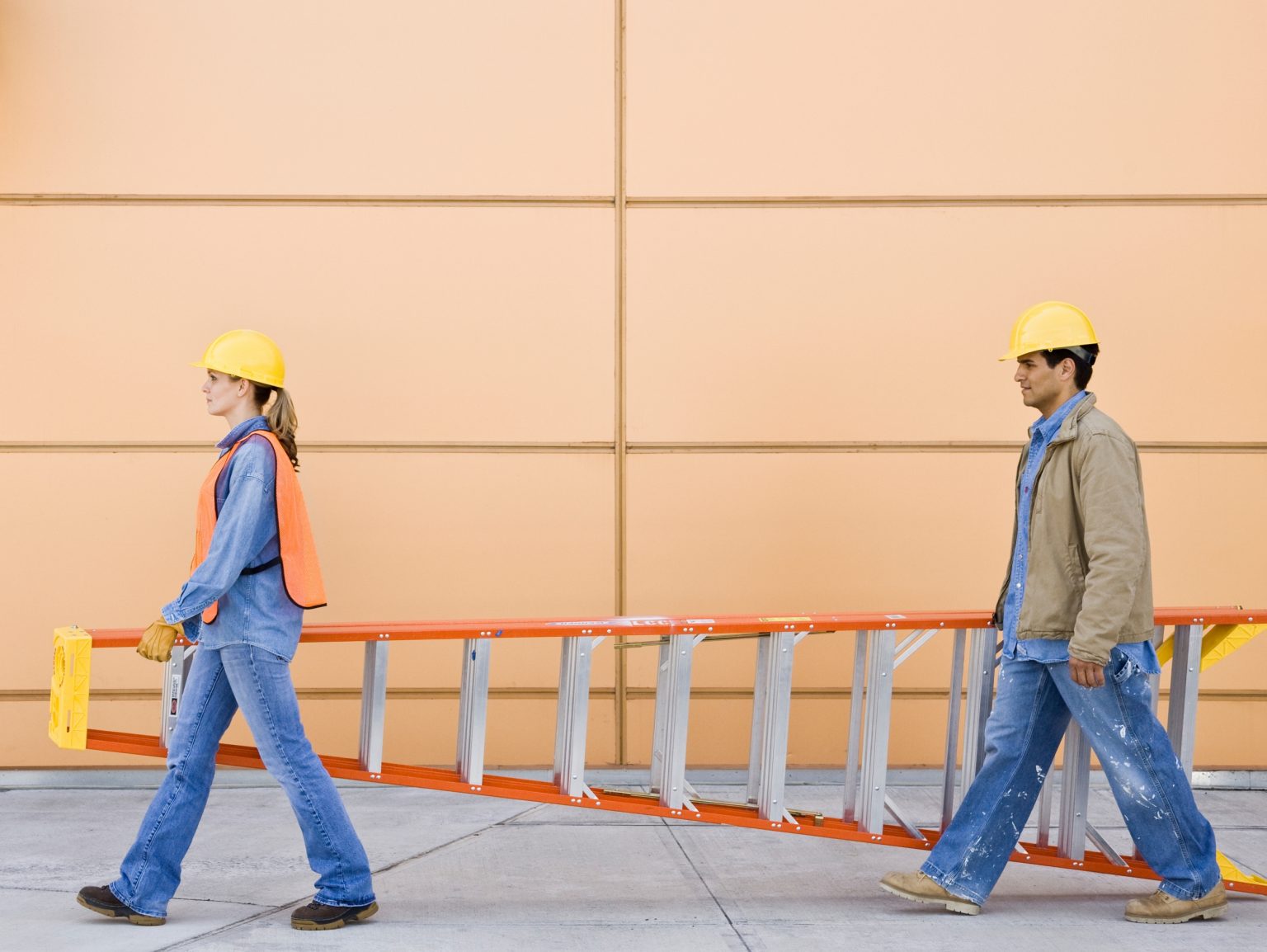
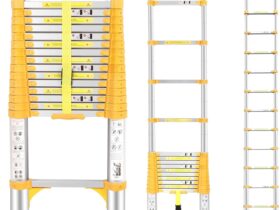
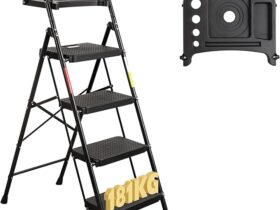
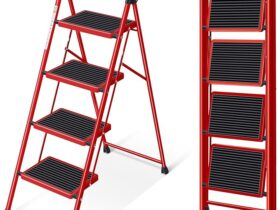
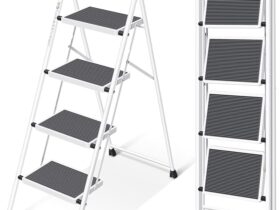
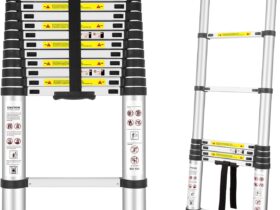
Leave a Reply
View Comments